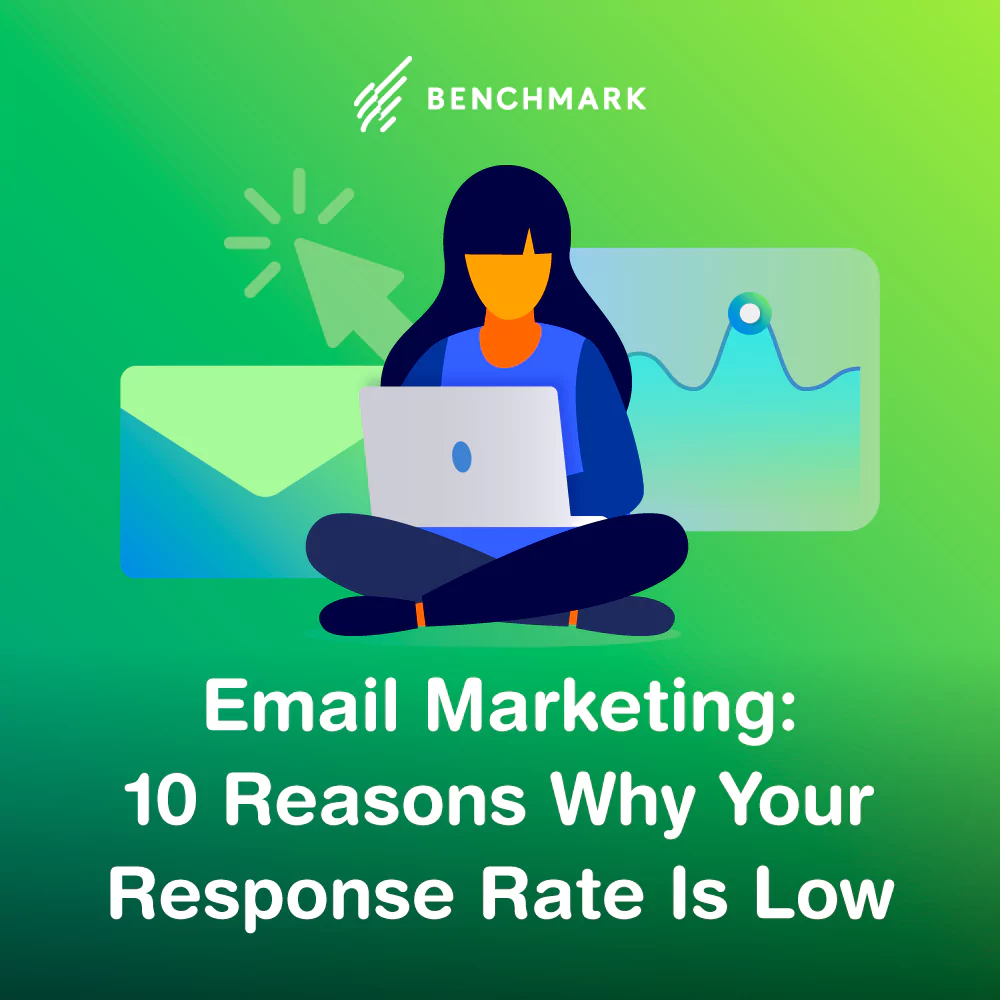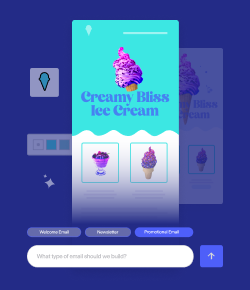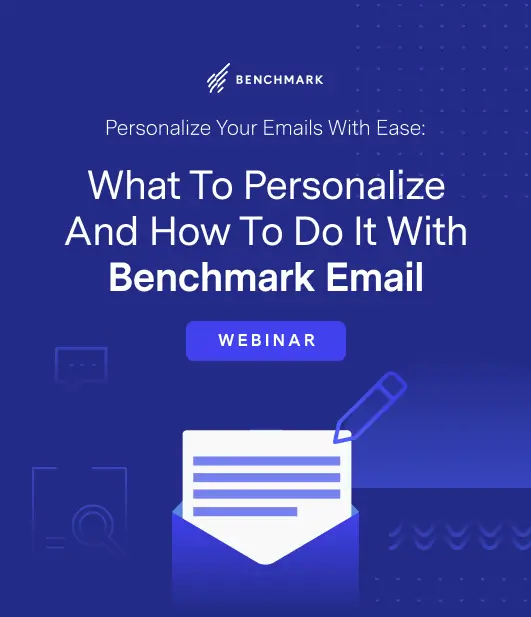
When you implement an email marketing strategy, you have to continually be ready to adapt to new methods and improve whenever needed. Some metrics gauge the performance of marketing emails, and if they portray that the response rate is low, you should revise the strategy you’re using.
Perhaps you need to write more engaging sales emails, include more visuals, or try incorporating video content in your emails. Regardless of what new methods you try, first, you have to understand what could be lowering the response rate on the email marketing strategy you are implementing.
Well, here are ten culprits of a low email response rate:

1. Bad Timing
Sending emails at random times can lead to a lower open rate because your target audience looks at their inbox at very certain times. If you send the email while they are busy at work or when they’re asleep, it will be buried by others that will be sent after it. It will lose its priority, and potential customers won’t see it and, therefore, open it.
It is essential to identify the trends of the target market you have in mind and determine the best time to send emails to them. Generally, it’s good practice to send emails in the morning when your audience wakes up. Also, consider that some people go through their emails when commuting to work, so up until about 10 a.m. should be a good window.

2. Promotion Overkill
Don’t bore your audience. Even when writing product emails, you should avoid talking too much about your brand because your audience will quickly lose interest. Instead, focus more on your clients and their needs. Use these emails as a chance to address their pain points and issues, and explain how you, or your product, can help them. Make the connection between them and your service or product, which will bring them in and make them interested in what you have to say.
After your intro, outline your offer, specifically focusing on how it will add value. It’s best to keep the intro short and to jump straight to the offer and CTA. You have a limited amount of time to entice your readers and inspire them to act, so don’t use it all up with unnecessary wordiness.
If you need help in this area, you can always outsource your content creation by using an agency or a professional writing service that provides high-quality content, creative writing, and email content.
3. Confusing CTAs
CTAs are very important. They direct customers to take a certain step, like visiting your product page, downloading a piece of content, or registering for an informative webinar.
They’re also very effective in driving customers down the sales funnel and leading them towards a purchase. Hence why CTAs are so important, and why going about them the wrong way is a mistake you just don’t want to be making.
Not being direct, clear, and straightforward with what action you want your audience to take will result in absolutely no action being taken whatsoever. Or what’s worse, you could inspire them to unsubscribe from your messaging altogether.
Next time you put together an email, come up with specific CTAs and make sure you’re only using one per email. Try making them a button or image instead of using a text-based link, which will make them pop and be clearly identified.
4. Lengthy Copy
People are always on the move. Especially working professionals, which no doubt make up a large portion of your audience base (if not all of it).
Sending your busy audience unnecessarily long emails is a waste of your energy and theirs. Putting in all that effort towards an email that will most likely not be read isn’t a great usage of time. What’s more, there’s little chance a lengthy, wordy email will boost conversions. Keep it up, and your business will be known for these kinds of emails, and eventually, you’ll lose subscribers and customers. It’s not a good look.
When writing an email, remember that time is very precious for everyone involved because, in most cases, their income depends on it. Showing how you respect their time by writing short and concise emails will show your audience you’re reliable and a valuable resource for them to spend their time engaging with.

Build custom-branded emails effortlessly.
LEARN MORE5. Sending Without Testing
You could be lowering the open rate of your emails if you’re sending them without testing first. Emails aren’t something to rush through. Even if you’re always in a hurry, you have to find time to send yourself a test email first. Trust me; your customers will see when you don’t make an effort.
If the email you send is disproportionate, the links don’t work, or the images used are somehow warped, your audience will start to lose trust in you. They’ll associate your brand with low quality, and they could think the service you provide is probably low quality as well.
Take the extra few minutes to test your emails. Determine if they are suitable on mobile devices and ensure they look okay on different email service providers, as well. It’s definitely worth it.
6. No Personalization
Sending emails that aren’t personalized and have lackluster copy tell your prospects that you don’t care about where they are in the buyer’s journey, or about their personal needs.
Each prospect is different. Each works within a particular industry, is at a different stage in the journey, and needs different content to receive adequate education. When you send all your prospects the same emails, it’s going to be irrelevant to a substantial portion of them. When an email is irrelevant to someone, they won’t read it, they won’t click on a CTA, and they definitely won’t open the next one they receive.
Instead of sending generic emails, gather data on the audience you have by using marketing automation and CRM software. Find out what type of content they like by tracking what they’re clicking on and downloading. Use that data to get to know them better and inform the email campaigns you send them.

Personalize Your Emails with Ease: What to Personalize and How to Do it With Benchmark Email
DOWNLOAD NOW7. Wrong Messaging
When you’re sent an email that includes negative language, how does that make you feel? It’s awkward, weird, and just doesn’t sit well with most people. Sometimes, companies think that by taking a strong stance on an issue, they’re showing their prospects that they’re a leader in the space and that they have an informed opinion. While this may be true for some content, like opinion pieces and guest-contributed content, this could backfire significantly when it comes to emails.
Specifically, sometimes I see brands sending emails with the words “do not reply.” Implying that prospects cannot simply reply to an email translates to the sender, not wanting to be contacted with problems or questions.
Instantly, customers will believe that you are all about the money but don’t want to resolve their queries. This can have adverse effects on a brand’s subscriber rate and can leave a negative impression of the brand for a lot of people.
Be transparent in your messaging, but don’t confuse things by being overly negative or by implying that you are unreachable.
8. Not Proofreading
Sending grammatically incorrect emails, and including typos and incorrect punctuation will put a fast track on disengagement for your brand.
Again, don’t let being in a hurry make you careless. Remember the detrimental effect these silly errors can potentially have on the email you send.
Carve out some time to go through your emails carefully and meticulously. Proofread them to weed out any visible errors. After doing so, use an editing tool, like Grammarly, to ensure any errors that are hard to identify are spotted and corrected.
9. Lacking CAN-SPAM Standards
Neglecting to comply with the CAN-SPAM standards will send your emails straight to the spam folder. There’s an immediate branding of untrustworthiness associated with anything in spam folders, so trust me, that’s not the place you want your emails to end up.
To avoid that aftermath, go through the CAN-SPAM checklist to ensure you’re practicing all the points in your email content creation. For example, companies should avoid certain spam trigger words, include their physical address, and a way to unsubscribe that’s easy to find in the email. Making those simple changes will make the emails you send more trustworthy and can keep them out of the spam folder.
10. No Consistency
Don’t throw in the towel when your email outreach strategies don’t take flight as soon as you thought they would.
After sending a couple of marketing emails with little response or activity, some businesses jump to conclusions and immediately adjust their strategy. While being proactive is great, you don’t want to do so without gaining real insight first. Sometimes, all you need is a little time and consistency to start seeing results. Remember that an email marketing strategy is a marathon, not a sprint. Results are rarely instantaneous, and emails live in inboxes for a while. So just because someone didn’t open your email right away, doesn’t mean that the open rate won’t improve as time moves on.
An email marketing strategy is an excellent method to reach prospects, engage them, nurture them, and convert them to customers. But your strategy is only as good as the way you practice it. It’s crucial that you email with care, and take the necessary steps to ensure you aren’t doing anything that could negatively affect your response rate.
Author Bio







